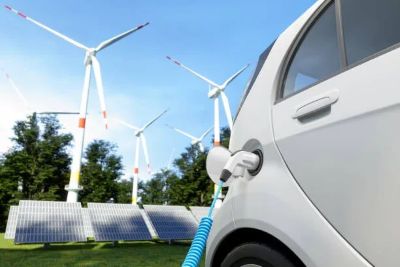


How Fast is a Level 2 EV Charger? What You Need to Know
As a Professional EV Charger Manufacturer in China, Topper Company Provides Reliable Electric Vehicle Charging Stations and Comprehensive Solutions.As electric vehicles (EVs) become more popular, efficient charging solutions are essential. Among the available options, Level 2 charging is one of the most common, offering a practical balance between speed and convenience. But how fast is Level 2 charging, really?
Level 2 chargers typically provide between 3 kW and 19.2 kW in the U.S., and up to 22 kW in Europe. This translates to approximately 10 to 75 miles (16 to 120 km) of driving range added per hour of charging. Compared to a basic Level 1 charger, which supplies about 1.2 to 1.8 kW, Level 2 chargers can be up to 19 times faster. However, they are still slower than ultra-fast Level 3 DC chargers used for quick top-ups on long trips.
Several factors determine how quickly your EV battery charges on a Level 2 charger:
Level 2 chargers range from 3.3 kW to 22 kW. Typical home chargers provide between 7.2 kW and 11.5 kW, adding about 20–40 miles of range per hour. Public chargers can go up to 19.2 kW or 22 kW, offering faster charging for compatible vehicles. However, your car’s onboard charger (OBC) limits how much power it can accept — if your OBC maxes at 7.2 kW, using a 19.2 kW station won’t charge faster.
A larger battery takes longer to charge. For example:
A 40 kWh battery (like the Nissan Leaf) may take around 5–6 hours at 7.2 kW.
A 100 kWh battery (such as the Tesla Model S) might need 12 or more hours under the same conditions.
Your EV’s OBC converts AC power from the charger to DC for the battery. The OBC’s maximum power rating is often the bottleneck. Cars like the Porsche Taycan have OBCs rated up to 19.2 kW, enabling faster Level 2 charging than models capped at 7.2 kW, such as the Chevy Bolt.
Cold temperatures can slow charging because batteries become less efficient. Conversely, very hot weather might trigger cooling systems, reducing charging speed slightly. Quality of cables, connectors, and the charger itself also affect charging performance.
| Charging Level | Power Output | Range Added Per Hour | Ideal Use |
|---|---|---|---|
| Level 1 (120V) | 1.2–1.8 kW | 3–5 miles (5–8 km) | Overnight home charging |
| Level 2 (240V) | 3.3–22 kW | 10–75 miles (16–120 km) | Home, work, public charging |
| Level 3 (DC Fast) | 50–350 kW | 100+ miles in 30 mins | Long trips, quick top-ups |
Level 2 charging is ideal for daily use, including overnight home charging and workplace or public station charging during long stops. DC fast chargers are best suited for rapid recharges on highway trips.
Tethered chargers come with a fixed cable and connector, making them convenient for home use. Untethered chargers require you to use your own cable, offering flexibility in public locations where multiple EV types visit.
Connector types vary by region:
SAE J1772 (Type 1) is standard in North America for most EVs.
Mennekes (Type 2) is common in Europe.
GB/T is used in China.
Tesla NACS is Tesla’s proprietary standard, now opening to others. Tesla owners typically use a J1772 adapter for non-Tesla Level 2 stations.
Level 2 chargers offer a balanced solution for most EV owners — faster than Level 1 and more affordable than DC fast chargers. They are perfect for:
Overnight home charging
Workplace charging while parked for hours
Public locations with medium-length stops
Remember: charging speed depends on your vehicle’s onboard charger, battery size, and charger power. As EV technology evolves, Level 2 charging remains a crucial part of the growing electric transportation ecosystem.Know more about Google SEO Directory
